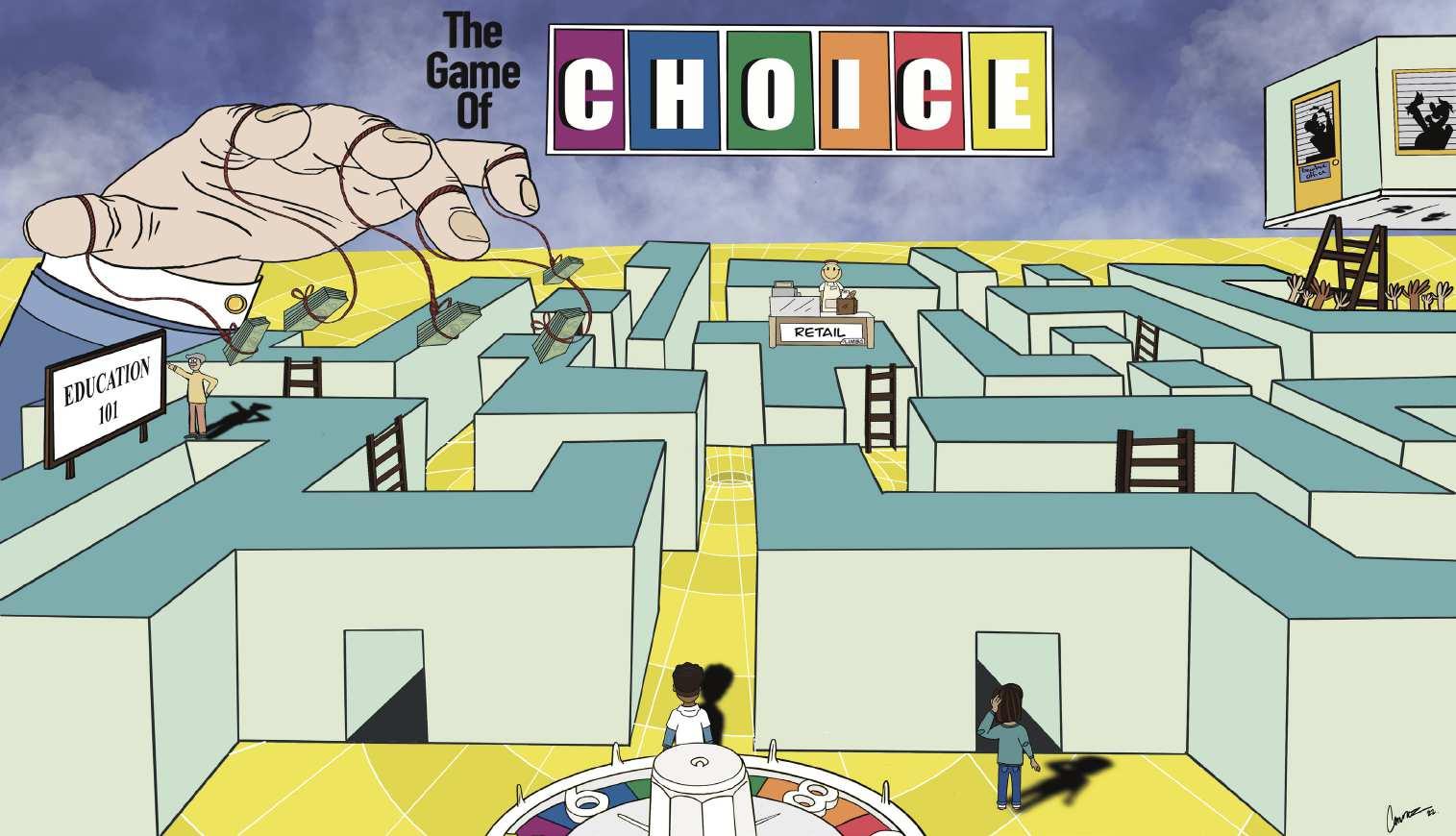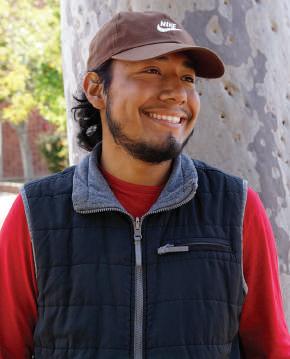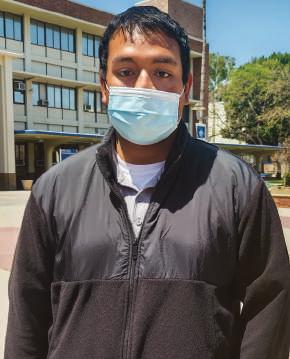
12 minute read
Opinions & Editorial
EDITORIAL
ILLUSTRATION BY CASSANDRA MUNOZ
Advertisement
Income Disparity Grows as Enrollment Decreases
BY KATHARINE FORD
Los Angeles Unifed School District (LAUSD) enrollment is decreasing. Current enrollment in LAUSD schools is approximately 430,000 students lower, down from 737,000 students 20 years ago, according to Kyle Stokes in a LAist article on Feb. 10, 2022. While these statistics include enrollment in all grades from kindergarten to high school, we can imagine the decrease in graduating high school students. If the number of Los Angeles high school graduates decreases, then the number of students available to enroll in Los Angeles Community Colleges also decreases.
What will this mean for community college enrollment, as we witness lower enrollment in our colleges. What will this mean for Los Angeles Community College District (LACCD) colleges’ enrollment of minority students?
LACCD tells us that by far, the largest minority group enrolled in its nine campuses is the Latinx population at 58.6%, while White enrollment is 14.9%, and African-American enrollment is 8.8%.
We know that ethnic minorities, like the Latinx population, rely on community colleges for education to improve their employment opportunities.
If fewer minorities are getting certifcates for vocational training, associate degrees, or transferring to four-year universities through community colleges, how will that impact the vast income disparity we already see in the United States?
Te adage, “the rich get richer while the poor get poorer,” is a fact of life in the United States. How will the United States economy fare as the low-income population continues to increase and the middle-class population decreases?
We already see how the infation problems caused by the pandemic, and the war in Ukraine afects all Americans.
If more people opt to enter the workforce rather than attend community colleges to improve their quality of life, we will see income disparity increase even more.
While many people may prefer to enter the workforce now rather than advance their education, they may be able to weather the current economic woes.
However, without advancements in education, the prospect of a better income in the future is unlikely. Tis only perpetuates the problem of income disparity. If only everyone in all socio-economic groups would see the advantages of improving the economy with education, we could see how the economy would grow more robust and weather storms like the pandemic.
Not So Fast, Let’s Keep on Our Masks
BY BEATRICE ALCALA
It is very hard to understand why anyone would be against wearing something that protects oneself and someone near.
It is extremely hard to understand why anyone would be against a policy designed to protect the individual and others. To wear or not to wear a mask is not a political afliation. It is simply stupid not to wear one. It shows the person does not care about others. Tis does not associate anybody to any particular party.
Not much scientifc evidence is needed to see how many lives wearing one saved. A study late last year from the CDC reported that masks make a diference.
“Cloth masks not only efectively block most large droplets … but they can also block the exhalation of fne droplets and particles (also often referred to as aerosols) … which increase in number with the volume of speech,” the December 2021 report stated.
I would like to present more evidence. By early April of this year, 6,201,796 people had lost their lives worldwide during the pandemic, according to “Worldometer,” a site that tracks COVID-19 deaths.
Tere did not have to be so many deaths. Even inside the White House, Jen Psaki, the press secretary tested positive for the virus. She is ofen seen at the podium during press briefngs without a mask. Is this what we call freedom?
New Zealand, one of the closest allies to the U.S., kept a tight lid on COVID-19 until Jan. 28, with 33 deaths reported. Sadly, today New Zealand has reached its highest point of 457 deaths. Te country keeps educating its citizens of all ages, encouraging them to wear masks and sanitize their hands and surfaces that people would come in contact with.
Instead of debating about “freedoms” that have nothing to do with our rights, but protect a population’s health, we should follow the New Zealand model to protect one another.
Because of the emergence of new variants, such as Omicron and its variants, New Zealand is spending tremendous time and energy informing their citizens about how contagious these variants are. Let’s be conscious and kind to our neighbors by wearing a mask. We can stop the spread of this virus.
U.S., NATO Must Seek Alternatives to Sanctions
BY EDWARD LOCKE
Te removal of Russia from the Society for Worldwide Interbank Financial Telecommunication (SWIFT) will certainly damage its economy. However, on Oct. 13, 2014, Chinese and Russian central banks signed an agreement pertaining to Chinese Yuan-Russian Ruble currency exchange, which allows both countries to bypass U.S. dollars in their trade.
China has developed the Renminbi Cross-Border Transaction System, an alternative to SWIFT, serving around 100 countries. Russia could use it for foreign trade.
Terefore, U.S. sanctions will not deal a deadly blow to the Russian economy. Instead, it could cause serious collateral damage to the uniquely dominant position of U.S. dollars in international trade.
Te sanctions on energy products from Russia can have various possible consequences. Te United States is importing only 8%-10% of petroleum. Encouraging other countries such as Saudi Arabia, United Arab Emirates and Venezuela to increase production and export could fll the gap.
In the United Kingdom, bypassing Russia’s oil could be implemented easily because the UK is a large energy producer. For Germany and France that depend on Russia for more than 40% of natural gas and coal, and more than 25% of petroleum, there is no easy way to fnd alternative sources within a short period of time. Tat’s why both countries are staunchly opposed to sanctions on energy sources.
Without sanctions on energy sources, one of Russia’s principal export products, the efectiveness of sanctions will be seriously compromised.
Based on statistics from the Trading Economics website, “United States’ imports from Russia cost over $30 billion during 2021.” Tey are mostly
Whatever Happened to Film Criticism?
BY CHRISTIAN CHAVEZ
What movie did you watch last weekend? Was it an intimate drama on a streaming site, an international fick at your local cinema or was it the newest mega blockbuster at the multiplex? What ever you watched, chances are there’s a re-
view for that.
Tere is also a possibility of someone on the Internet arguing about that movie review. It is a fundamental part of the cinematic ecosystem.
Deciding what to watch is ofen a hassle in the modern era of Netfix and other streaming sites. Te menu is endless, and ofen the content looks appetizing. What happens when you fnally choose what to watch, and it ends up giving you food poisoning? Te role of the critic is without bias, to review each new flm with a sharp eye. It is not a perfect system. Film criticism is not subjective. It is the view of hundreds of reporters for diferent publications.
It has a storied past that includes Roger Ebert and Gene Siskel of the famed television show, “At the Movies.” Tey pioneered the “Tumbs Up” or “Tumbs Down” review that declared a movie worth your time or not.
Nowadays, the metric to measure a movie’s worth is based on an algorithm between 0-100 in many aggregate sites. “Rotten Tomatoes” is a website that rates movies “Fresh” or “Rotten” using the algorithmic scale.
What “Rotten Tomatoes” is not, contrary to popular belief, is a singular individual or organization that reviews movies. Audiences are tired of hearing what is labeled good or bad when it comes to content that they like.
With the advent of the Internet, and especially sites like Twitter, audiences and critics have been at each other’s throat regarding new movie releases.
Critics are tired of singular IPs encroaching the box offce while audiences are only interested in a good time. It’s also problematic when a movie studio becomes a monopolized media machine that cranks out new content every other week. Te saturation of superhero cinema has created a hells-cape for those who wish for a wider menu. Ten there’s the issue of audiences who believe that critics are out to tarnish their favorite movies. Not impossible, but it is unlikely because it’s not art in the traditional sense. Te solution is to treat movies as something other than just entertainment. Too ofen, movies are brushed of as pop fction when cinema has a rich, storied history.
Finally, learning to talk about and critique flms as serious art is essential. LACC has a relationship with the Hollywood Foreign Press Association. Tere should be a class that speaks to this issue.
Collegian
Los Angeles City College Visual & Media Arts Department 855 N. Vermont Ave. Los Angeles, CA 90029 323.953.4000 ext. 2832 losangeles.collegian@gmail.com
Editor-in-Chief SORINA SZAKACS
Graphics Layout Editor BEATRICE ALCALA Christian Chavez
Copy Editors SORINA SZAKACS ANGELA JOHNSON DANIEL MARLOS
Opinions & Editorial Editor KATHARINE FORD
Broadcast BEATRICE ALCALA MARTIN RENTERIA LOUIS WHITE
Photo Editor LOUIS WHITE
Photographers CHRISTIAN CHAVEZ DANIEL MARLOS LOUIS WHITE
Illustrators MICHAEL SITAR CASSANDRA MUNOZ
Reporters ESWARD LOCKE, JUAN MENDOZA, SORINA SZAKACS, CHRISTIAN CHAVEZ, LOUIS WHITE, POUPY GAELLE NGUESTOP, KAYLA MEEKS, DULCE GALVEZ, MATTHEW RODRIGUEZ
Faculty Adviser RHONDA GUESS
For all submissions including letters to the editor and publicity releases, send materials to Collegian offices located in Chemistry Building, Room 207, or email: losangeles.collegian@gmail.com.
To advertise in the Collegian, direct all insertion orders and questions to: pr.collegian@gmail.com.
Issues of our award-winning newspaper and magazine are instantly available to our readers on issuu.com/ collegianwired.
CITY VIEWS
How do you feel about remote finals? What will it take for students to return to campus in August?

CHRISTINA HUBSKAYN
Major: Media Arts
COMPILED BY DULCE GALVEZ
PHOTOS BY BEATRICE ALCALA AND DULCE GALVEZ
I think it is nice to have remote fnals. I feel like there is not going to be that much pressure on students. Tat will make their life a little more bearable and easier. I do not think it is something bad.
I feel like people want to go outside and start socializing with friends. Te events and workshops on campus inspire students to go outside of their comfort zone and be less scared. Everything will be getting back to normal eventually
In my opinion, fnals are pretty great. I try to study everyday. Remote fnals are convenient but I have to tell myself to get up from bed and just do it.
I don’t think students returning to campus is the school’s issue but the county’s issue, as long as mask [mandates] are not lifed. I think students would defnitely come if that changes, as they are really big on safety.

JUAN NARCIA
Major: Baking
Te students who don’t like online classes will be happy to return to campus. Online, they do not get the same help with tutoring.
Professors need more accommodations to help them. Students have to come back to campus because they don’t do anything at home, they just sleep and play video games. Tey should come back to campus to study more.

GABRIEL NAVARRO
Major: Kinesiology
I feel like the fnals are not going to be too tough for me. I am currently enrolled in swimming and physiology 101.
I’m taking two eight-week classes, … statistics and … English 103. I am not too worried about the fnals of those two classes because they just started last week. As for physiology, it is a little harder.
I have to put a little work into it. Swimming does not have anything to do with fnals. In August, if students do hope to come back, I think people are going to have an issue with getting back into the routine of having to do in-person lectures. Students are getting used to being at home.
I think people should come back on campus next semester because it is a great way to get out of the house.

JOSUE CUADRA
Major: Kinesiology
I think the majority of students are taking Zoom and online classes because at this point into the pandemic they got accustomed to staying at home.
Tey don’t want to wake up early, drive to school, and spend money on gas a

KENNY UMANA
Major: Theatre
INK STYLE

FROM “NATO” PAGE 2
low-tech products for which alternative sources could be found without too much difculty.
For high-tech products, it is harder to fnd alternative sources. Since Russia’s principal exports are weapons and energy products, the impacts of these sanctions are minimal.
To make sanctions work, most countries must sign up. However, only the developed Western nations are interested in these endeavors. China is the second largest economy on Earth today and staunchly opposed to any sanctions.
In fact, China’s position on this confict could be seen as “neutral,” refusing to call Putin’s “special military action” an invasion, while it provides humanitarian aid to the Ukraine. Tis position could be based on Beijing’s realistic geo-political and commercial calculations and its good relations with both countries. Tese facts cause China to consider peace between Russia and Ukraine in its best interests. Tus, Russia most likely has a chance to survive the sanctions.
Te sanctions so far have caused serious collateral damage to the U.S. economy. Gas prices at the pump and the cost of food have skyrocketed. Te above facts clearly show that U.S. sanctions, coupled with strengthening NATO’s defense forces, might work to warn Russia not to extend its military campaign beyond the border of Ukraine.
But it could also be inefective in stopping Russia from imposing its demands on Ukraine (“neutrality” and “no membership in NATO”). Meanwhile, it could damage the economic interests of the United States and its allies.
Terefore, I think imposing sanctions against Russia is obviously not the best way to protect American interests. Encouraging Russia and Ukraine to negotiate a peaceful settlement could be a better way.




